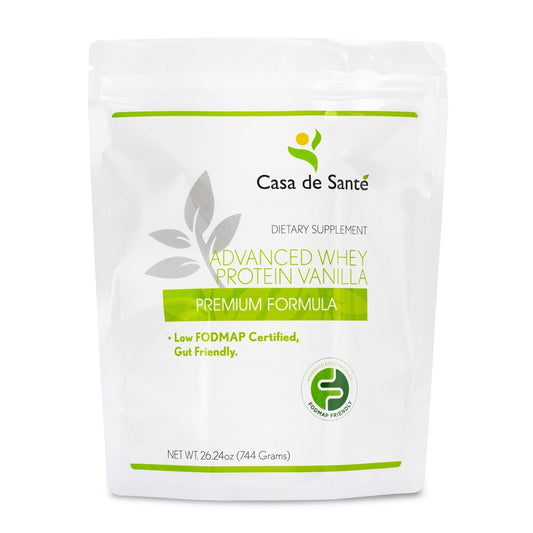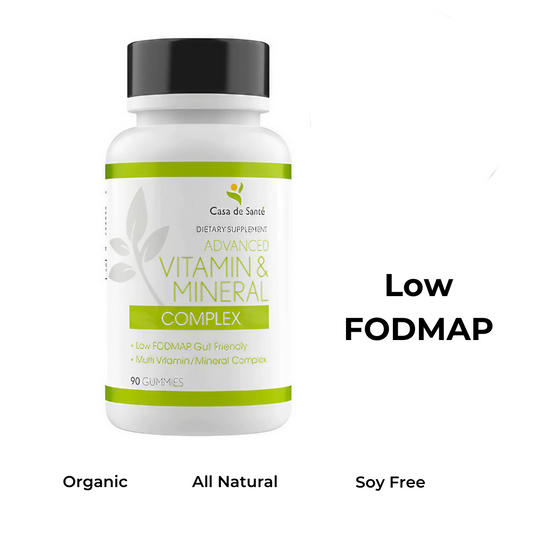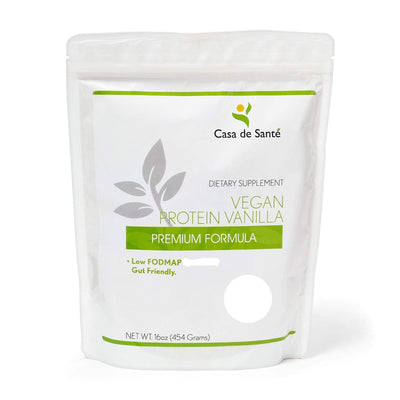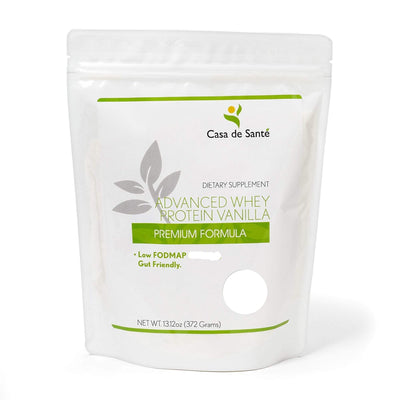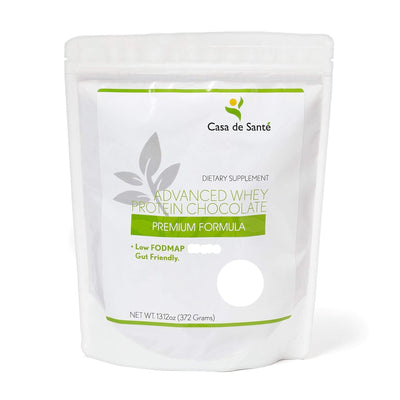Can I Have Applesauce on an IBS Diet? A Comprehensive Guide
Can I Have Applesauce on an IBS Diet? A Comprehensive Guide
Living with Irritable Bowel Syndrome (IBS) means carefully navigating your diet to avoid triggering uncomfortable symptoms. When it comes to fruits and their derivatives, questions often arise about what's safe to consume. Applesauce, a common household staple, frequently leaves IBS sufferers wondering: is this seemingly innocent food friend or foe? This comprehensive guide explores whether applesauce deserves a place in your IBS-friendly meal plan.
Understanding IBS and Dietary Triggers
IBS affects approximately 10-15% of the global population, causing symptoms like abdominal pain, bloating, gas, diarrhea, and constipation. While the exact cause remains unclear, diet plays a crucial role in managing symptoms. Many IBS patients follow specialized diets like low-FODMAP, which restricts certain carbohydrates that can trigger digestive distress.
Food sensitivities vary significantly among individuals with IBS. What triggers symptoms in one person might be perfectly tolerable for another. This variability makes personalized dietary approaches essential for effective symptom management.
The FODMAP Connection
FODMAPs (Fermentable Oligosaccharides, Disaccharides, Monosaccharides, and Polyols) are specific types of carbohydrates that can be problematic for IBS sufferers. These carbohydrates are poorly absorbed in the small intestine and rapidly fermented by bacteria in the large intestine, potentially causing gas, bloating, and altered bowel habits.
Common high-FODMAP foods include certain fruits (like apples, pears, and watermelon), vegetables (like onions, garlic, and mushrooms), dairy products containing lactose, wheat-based products, and sweeteners like honey and high-fructose corn syrup. Understanding the FODMAP content of foods like applesauce is crucial for IBS management.
The implementation of a low-FODMAP diet typically follows a three-phase approach: elimination, reintroduction, and personalization. During the elimination phase, which usually lasts 2-6 weeks, patients remove all high-FODMAP foods from their diet to allow symptoms to subside. This reset period gives the digestive system time to calm down and establishes a symptom-free baseline. The reintroduction phase systematically brings FODMAP subgroups back into the diet one at a time, carefully monitoring symptoms to identify specific triggers and tolerance thresholds.
Beyond FODMAPs, other dietary factors can influence IBS symptoms, including meal size, eating speed, fat content, spice levels, and caffeine or alcohol consumption. Many patients report that stress and anxiety can amplify their sensitivity to dietary triggers, highlighting the complex brain-gut connection underlying IBS. Research indicates that up to 70% of IBS patients experience significant symptom improvement when following an appropriately tailored dietary approach, though finding the right balance often requires patience, careful tracking, and ideally, guidance from a registered dietitian specialized in digestive disorders.
Applesauce and IBS: The Basics
Raw apples are well-known IBS triggers for many people. They contain high levels of fructose (a FODMAP) and sorbitol (a sugar alcohol), both of which can cause digestive distress. Additionally, apples contain soluble fiber in the form of pectin, which, while beneficial for some, can exacerbate symptoms in others.
But what happens when apples are processed into applesauce? Does the cooking process alter these problematic compounds? The answer isn't straightforward and depends on several factors.
How Processing Affects FODMAPs
When apples are cooked to make applesauce, some changes occur that might affect how your body responds to them. Cooking breaks down some of the fiber structure, potentially making applesauce easier to digest than raw apples for some individuals. However, the FODMAP content—specifically the fructose and sorbitol—largely remains present.
Commercial applesauce often contains added sugars or high-fructose corn syrup, which can increase the FODMAP load and potentially worsen IBS symptoms. Unsweetened varieties are generally a better choice for those with IBS, though they still contain natural fruit sugars that may be problematic.
Portion Size Matters
According to Monash University, the global authority on FODMAP research, small portions of applesauce (about 2 tablespoons or 40g) may be tolerated by some IBS sufferers, as this amount contains acceptable levels of FODMAPs. However, larger portions can quickly accumulate to problematic FODMAP levels.
This concept of "FODMAP stacking"—consuming multiple moderate or low-FODMAP foods in one sitting that collectively create a high-FODMAP load—is important to consider when including applesauce in your diet. Even if you tolerate a small amount, eating applesauce alongside other fruits or high-FODMAP foods could trigger symptoms.
Potential Benefits of Applesauce for IBS
Despite potential concerns, applesauce isn't without merit for some IBS sufferers. Its soft texture and partially broken-down fiber can make it gentler on the digestive system than raw apples. For those whose symptoms lean toward constipation-predominant IBS (IBS-C), the soluble fiber in applesauce might actually help regulate bowel movements.
Applesauce is also a versatile food that can provide nutrients while being easy to consume during IBS flares when appetite may be reduced. It offers vitamins C and various B vitamins, along with small amounts of potassium and other minerals.
Soluble Fiber Benefits
The pectin in applesauce is a form of soluble fiber that absorbs water in the digestive tract, forming a gel-like substance. For some IBS sufferers, particularly those with diarrhea-predominant IBS (IBS-D), this can help solidify loose stools and regulate bowel movements.
Additionally, soluble fiber can support beneficial gut bacteria, potentially improving overall digestive health over time. However, introducing fiber should be done gradually, as a sudden increase can temporarily worsen gas and bloating symptoms.
Making Applesauce More IBS-Friendly
If you're interested in including applesauce in your IBS diet, several strategies can help minimize potential triggers while maximizing benefits. These approaches focus on controlling ingredients, portion sizes, and preparation methods.
Homemade vs. Store-Bought
Making your own applesauce gives you complete control over ingredients. Commercial varieties often contain high-FODMAP additives like high-fructose corn syrup, artificial sweeteners, or preservatives that might trigger symptoms. Homemade versions can be prepared with IBS-friendly ingredients and adjusted to your personal tolerance levels.
To make basic IBS-friendly applesauce, peel and core apples (peeling removes some of the insoluble fiber that can irritate sensitive digestive systems), cook them with a small amount of water until soft, then purée to desired consistency. Adding cinnamon not only enhances flavor but may offer additional digestive benefits for some people.
Low-FODMAP Apple Varieties
Some apple varieties naturally contain fewer FODMAPs than others. While research is still evolving in this area, some IBS sufferers report better tolerance of Granny Smith or Pink Lady apples compared to varieties like Gala or Red Delicious. Experimenting with different apple types for your homemade applesauce might yield a more digestible product.
Remember that even with lower-FODMAP varieties, portion control remains essential. Start with small amounts (1-2 tablespoons) and monitor your symptoms before gradually increasing if tolerated.
Fermentation Options
Fermented applesauce, while less common, might be better tolerated by some IBS sufferers. The fermentation process can pre-digest some of the problematic carbohydrates, potentially reducing FODMAP content. However, fermented foods can also trigger symptoms in some individuals, so personal experimentation is necessary.
Testing Your Tolerance to Applesauce
Given the highly individualized nature of IBS, the only definitive way to determine if applesauce works for your body is through careful testing. Systematic approaches can help you identify whether this food is a trigger for your specific symptoms.
The Elimination and Challenge Method
The most thorough approach involves first eliminating applesauce (and other high-FODMAP foods) completely for 2-6 weeks until symptoms stabilize. Then, introduce a small amount of applesauce (start with 1-2 tablespoons) and monitor your symptoms for the next 48 hours.
Keep a detailed food and symptom journal during this process. Note not only what you eat but also stress levels, sleep quality, and other factors that might influence symptoms. If no reaction occurs, you can gradually increase portion size in subsequent challenges to determine your personal threshold.
Working with Healthcare Professionals
A registered dietitian specializing in digestive disorders can provide invaluable guidance through the food testing process. They can help design a structured elimination diet, ensure nutritional adequacy during restricted phases, and interpret your results to develop a personalized long-term eating plan.
Your gastroenterologist can also offer insights about how different foods might interact with your specific IBS subtype and any other digestive conditions you may have. Never hesitate to consult these professionals before making significant dietary changes.
Alternatives to Applesauce for IBS Sufferers
If you find that applesauce consistently triggers your IBS symptoms, numerous alternatives can provide similar culinary functions and nutritional benefits without the digestive distress.
Low-FODMAP Fruit Options
Several fruits and fruit-based products are generally well-tolerated by IBS sufferers. These include ripe bananas, blueberries, strawberries, oranges, and kiwi fruit in appropriate portions. Purées made from these fruits can often substitute for applesauce in recipes or as condiments.
For example, mashed banana can replace applesauce in baking, while puréed strawberries might work as a pancake topping. Remember that even low-FODMAP fruits should be consumed in recommended portions to avoid symptom triggers.
Non-Fruit Alternatives
Looking beyond fruits, several other foods can substitute for applesauce depending on its intended use. In baking, pumpkin purée, yogurt (lactose-free if needed), or oil can often replace applesauce. As a side dish or condiment, well-cooked and puréed carrots or sweet potatoes might offer a similar texture and sweetness without the problematic FODMAPs.
Conclusion: Is Applesauce Right for Your IBS Diet?
The question "Can I have applesauce on an IBS diet?" ultimately has no one-size-fits-all answer. While applesauce contains FODMAPs that may trigger symptoms in some individuals, others might tolerate small portions well, especially when carefully prepared and consumed mindfully.
The key takeaway is that personal experimentation under appropriate guidance is essential. Start with small portions of unsweetened applesauce, monitor your body's response, and adjust accordingly. Remember that your IBS triggers may evolve over time, so periodic reassessment of food tolerances can be beneficial.
With patience and systematic testing, you can determine whether applesauce deserves a place in your personalized IBS management plan. Whatever the outcome, rest assured that numerous delicious and nutritious alternatives exist to satisfy your culinary needs without compromising digestive comfort.








